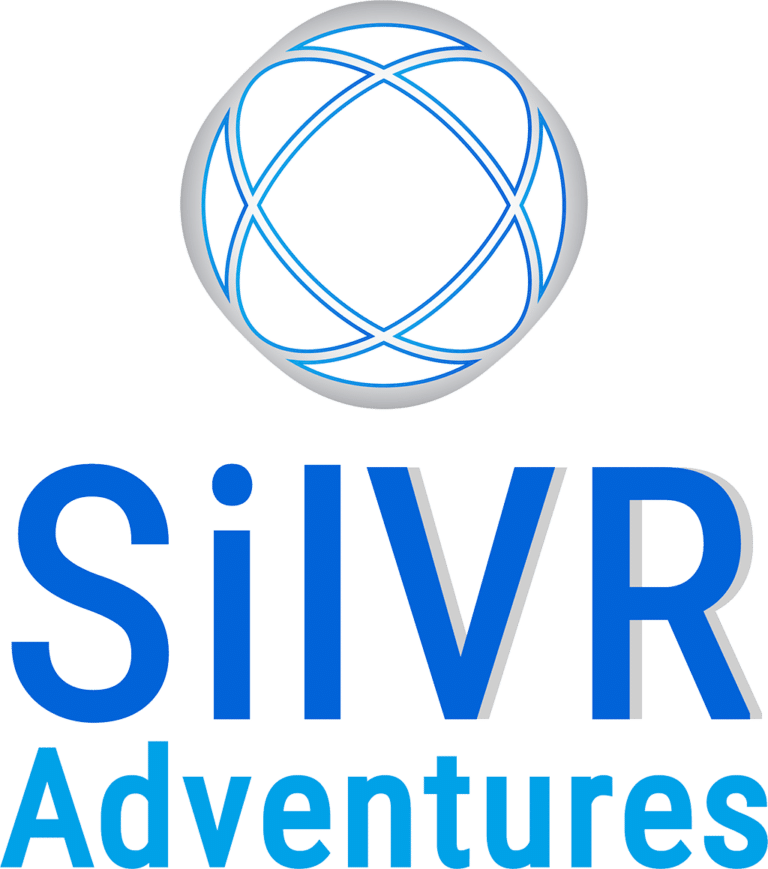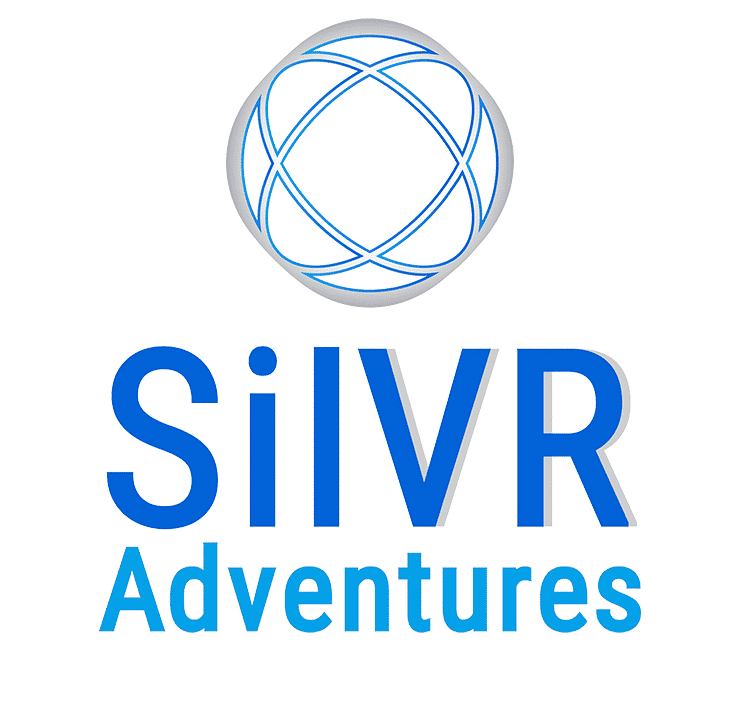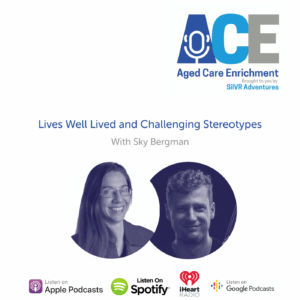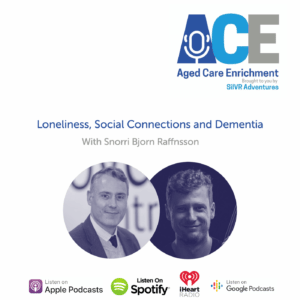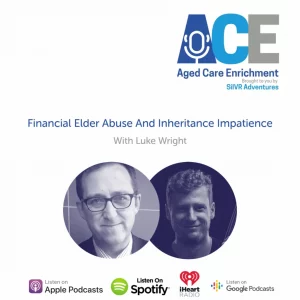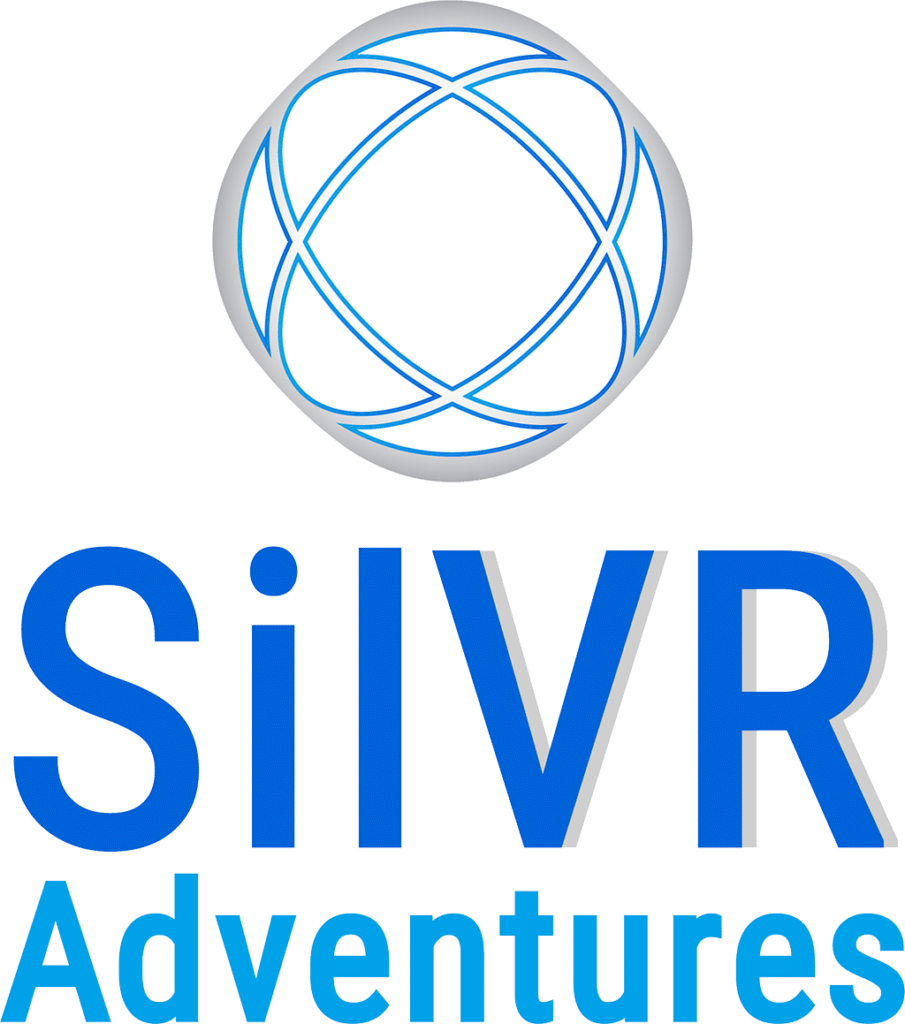Liz Baldwin is a clinical audiologist and department manager at Expression Australia, a not for profit created for and by the deaf community. Through her work with patients experiencing hearing loss, Liz has a lot of knowledge about how hearing loss can affect individuals beyond communication issues.
Hearing loss affects one third of all adults over 65, but despite this many people do not seek support or treatment for their hearing loss for up to seven years.
But Liz highlights a positive future. Thanks to a range of exciting new technologies, people who are hard of hearing are able to re-engage with their communities and daily lives.
This episode also was also released at the one year anniversary of the Aged Care Enrichment Podcast. And so it features a few celebratory messages from friends of the show, and even a special guest!
Transcript
Ash de Neef: Hey Liz, thank you so much for joining us on the program today.
Liz Baldwin: Thank you. Thanks for having me.
Ash de Neef: It’s a real pleasure. And we’re going to talk about hearing loss and deafness today. But maybe before we jump right into that, can we give our listeners a bit of your background and the work that you do?
Liz Baldwin: Yeah. So, I, myself am a clinical audiologist. I work for Expression Australia. So us us a larger organization we work for the deaf and hard of hearing. We’re huge advocates for AUSLAN and deaf culture. And majority of our work is around creating accessibility for people who are deaf and hard of hearing.
So we work heavily within the national disability insurance scheme sector. So supporting clients that are on NDIS and also people that, receive no funding and are supporting themselves in their hearing healthcare journey.
Our wider organization has a couple of different services. So I work as a part of the audiology. So we’re an adult rehab program, so seeing people who are 27 years and older. We provide interpreting and captioning for people that use AUSLAN, we provide support work services for people who are on NDIS plans and navigating that new world. We have online classes available for anyone that wants to learn AUSLAN.
We do workplace training, that’s a really important part of what we do. So again, tying back into that hearing awareness and, you know, if you’re hard of hearing or deaf person working in a predominantly hearing workplace, providing support and training to your staff so they can understand your needs.
And we have an employment assistance program. So again, assisting those people who find barriers to employment because of their hearing loss, to get back out into the workforce and find something that would be suitable and catering for their communications.
But I myself work in a clinical setting, so an audiology clinic. So still working a couple of days clinically seeing clients. And then the remainder of my time spent managing our department, our audiology department here. So sort of the best of both worlds.
Ash de Neef: Fantastic. And so seeing patients one-one and also working across the department, I’m sure you’re working with a lot of older adults, in what sort of situations are you often working with them?
Liz Baldwin: Yeah, so the majority of our clientele would be older adults. The majority of people over the age of 60 to 65. It’s one third, actually of people over the age of 65 will experience a hearing loss. So majority of our clients do fall into that age bracket.
So I myself see them in a clinical setting. Most of the time they coming here, maybe as their first experience to understand a bit more about their hearing or where their hearing and communication might be at.
Or otherwise I might be seeing someone a little bit further down their hearing or hearing loss journey. And it might be at the stage of fitting devices to help rehabilitate that and provide them the accessibility back into their day to day.
Ash de Neef: Fantastic. And for someone who might be just at the start of their hearing loss journey, what sort of treatments and interventions are you running?
Liz Baldwin: Yeah, so we’re an adult rehab clinic. So our goals are to provide knowledge around hearing loss and how it can impact your day to day life, both for the person experiencing the hearing loss and for their significant others, or the people that they are communicating with day to day.
Most of the time, if a hearing loss is identified to the point that it is impacting your ability to communicate daily. Or go about your daily tasks at work, listening to the TV, taking phone calls, those types of things, technology would usually be the main mode of rehabilitation.
So that could be in the form of hearing devices, hearing aids, so something that’s ear-worn. Or assistive technology, so that’s more around devices and products that can help create maybe safety and awareness within your home. Things like flashing towers to alert people to a doorbell chime rather than an auditory chime.
And also assistive technology in the means of microphone systems that help transmit speech over distance for say a classroom setting. Or if someone wanted to attend a lecture hall or something along those modes. So communication via the assistance of technology is mostly the work that we do.
Ash de Neef: Yeah. And communication, I can see being one of the big factors or elements of human life, that’s going to be at risk with hearing loss. What other things are affected by the loss of hearing?
Liz Baldwin: Yeah. So particularly amongst our senior clients, we often see hearing loss go un-diagnosed for many years. And it’s mostly just because it’s not picked up.
The behavioural responses, like not engaging or maybe self isolating those types of can often be misinterpreted as maybe just ageing or forgetting things or not being out to engage for as long as they maybe once used to. And then hearing loss often gets overlooked as a cause of those behavioural symptoms.
So it can often take up to seven years for someone to come in once a hearing loss has probably actually started to set in, or to take action on that hearing loss. And those behavioural symptoms have been there for around that amount of time, but it’s just hearing loss isn’t the common link that people think of between those two factors.
So by the time someone comes and sees me, we often hear that it is sort of social interaction is what they’re starting to miss out on. They’ll say things like “I’m not enjoying socially interacting as much. It’s a lot of effort.”
Then we often hear that this results in social isolation or they tend to just withdraw or not engage as often as they used to. Often withdrawing from things they once loved, if they attend a lecture, or theater or music concerts and things like that weekly or monthly, and they often withdrawing from things like that
You can see it in other behavioural ways. It can come down to things like being quite irritable or, sometimes getting quite upset or depressed. Just because you know, we’re humans, we need that connection and that communication and that’s, what’s become so difficult for these people.
Particularly people that gradually use losing their hearing over those ageing years we often find that it’s mostly sort of a behavioural response due to the hearing loss.
Ash de Neef: Yeah wow that’s very interesting. And I think before this discussion, I had this assumption that hearing loss might be something that’s quite easy to identify. Like, “oh, you know, Grandpa’s not hearing so well because he’s not responding in the way I expected”, but it could be interpreted as a myriad of other things.
Can you maybe, just for those people who either work in aged care or might have somebody who’s behaving a little bit differently to usual, can you point out some things or some questions that they can ask to ascertain if it’s hearing loss?
Liz Baldwin: Yeah that’s a really good point. So I for many years, did home visits or visiting people within residential care. And it often is something that is overlooked. It’s just the lack of education and awareness that is currently delivered to aged care facilities or residential homes.
But I would often attend and meet with a hard of hearing person for the first time. And it might’ve been the first time that anyone had actually sat and asked, “is this what you’re experiencing? Can you actually hear the TV? Do you find yourself, maybe just agreeing for the sake of agreeing?” And you’ll often see in the person that it’s their first time realizing that that is what they’re doing.
Because hearing loss can be so gradual and over time, I think we often just adjust our behaviour. We just think, “oh, I think everyone finds it a bit hard to hear at the dining table. It’s noisy, it’s an echo-y environment.” And so you just sort of start to compensate for things. And yet it isn’t until someone actually starts asking you maybe why you’re doing those things that it is almost like a light bulb moment.
So whenever I talk to staff within those residential homes, it is just about taking the time, sitting with the person and asking them, “did you not come out to the dining room table today because you’re uncomfortable out there?” Or, “are you able to communicate, is it a comfortable environment for you to communicate in?” “Is there any way that we could make it more comfortable for you?”
Sometimes the smallest things like offering to move them to a table that has a wall beside them or that they can sit near the window. Or somewhere that’s a little bit well lit so that they can see visual cues or a bit more lip reading.
Or just simple things like turning the television or the radio off that’s in the background to make speech a little bit more audible. So I think just identifying why they withdrew cause that’s often the first sign you’ll see them not attend a group. Don’t come to morning tea, don’t come to lunch.
So asking those questions, I suppose. And then offering a solution or if they haven’t seen an audiologist since they’ve been in care, it’s well worthwhile.
Sometimes it could be down to the smallest things of ears are blocked wax buildup. And honestly that can, it can make a world of change just seeing an audiologist and getting those things identified.
Ash de Neef: Yeah absolutely. And I think those conversations can be kind of tricky to have. I imagine. I’m sure everybody’s had that situation where you meet someone new and they go, “how are you?” and you say “yes!” And then you do the awkward thing and getting called out and that is quite hard.
So to have somebody ask, “are you really following here?” could be quite a difficult conversation right?
Liz Baldwin: Yeah, that’s right. I agree. But I think a lot of the time I see – once a client gets into my room, they’re just so thankful that someone has almost confirmed that it is hearing loss. That it’s not them just drifting off and not being able to stay focused.
We know all these things, we know that creates a much more demanding cognitive load for the person. Engaging particularly when there’s noise, can be very tiresome. It’s a lot of effort and it takes the fun out of it to be honest. So that often leads to such high rates of isolation or withdrawing.
So yeah, I think if you’ve got the confidence to gently approach the situation, or maybe just probe to see if that was why that was occurring. I think more often than not, you’ll find that the person will be really grateful and happy to be supported in that area.
Ash de Neef: Absolutely. And it reminds me of a member of my family has a friend in residential aged care and they write letters to each other. And the friend who is in the aged care is I’m not sure what stage in her hearing loss journey she’s at, but it’s quite hard for her to interact.
And she’s writing to her friend and saying, that people treat her as if she has cognitive decline and they start behaving around her as if she’s not aware of what’s going on Even though it’s just a communication issue. I can see all sorts of knock on effects like this right?
Liz Baldwin: Yep, absolutely. So like we said before, the misconception that there’s memory loss or cognitive decline or something else occurring before we’ve even got the hearing checked and can often be overlooked. And then saying that it’s also an association factor. So again it highlights the importance of getting hearing checked and being on top of that.
The research is very much still underway and ongoing for this area. But there is a lot of research currently, and the data is showing that hearing loss and cognitive decline have an association. Whether it be that there’s, sort of two theories at the point in time.
The cognitive load theory would argue that the declining cognitive capacity first, increases the cognitive load, then resulting in a sensory loss.
And then the other way round the sensory deprivation hypothesis. It would propose that the hearing loss leads to permanent deterioration of cognitive functions. Just because of the extra load and the resources required to engage and communicate.
But yeah, you’re completely right. People often misconstrue that it’s the cognitive decline occurring first. But we do often see this, that once rehabilitated or given access back to hearing at a conversational level, that person becomes bright again. They become engaged again.
Communication becomes easier. And yeah, the things like what people might’ve thought was memory loss is actually just that they misheard or they didn’t hear you, so they didn’t actually receive that information.
All those things tend to improve.
Ash de Neef: Yeah, fantastic. There’s some clear correlation there. Whether one causes the other we’re not sure yet, but they go hand in hand.
Liz Baldwin: That’s right.
Ash de Neef: Changing tack a little bit here. I can see that for older adults who are hard of hearing, there might be two different experiences between those who’ve experienced hearing loss, their entire life or deafness, and those who develop symptoms later in life.
What are the experiences? How did they differ those two experiences?
Liz Baldwin: Yeah. So here at Expression we work with both parties. We work with people that are congenitally deaf. People that have chosen AUSLAN as their main mode of communication or people that have grown up in, say the oral world and have used assistive technology.
And then the people that would maybe fall into the category of hard of hearing and have experienced sensory decline over time.
I think the biggest difference would be it’s just the accessibility. So there’s complete barriers for both of those parties. People that use AUSLAN, interpreters are required, Captioning is required, all those types of things. But there is a mode of communication being AUSLAN as their first language.
But for the majority of the clients that I see as they start to gradually lose their hearing, that’s their lifeline. So the only mode of communication they have is orally and then taking in oral stimulation. So the moment that’s gone, they rely on technology to rehabilitate them most of the time.
So I think often it’s about having the community of people that understand the hearing loss. So knowing how to communicate with someone that’s now experiencing hearing loss to a degree where maybe noisy environments aren’t applicable to them anymore. Lipreading might now be a really important factor to ensuring they can communicate as best they can.
Just managing hearing aids in general, so making sure that their hearing aids are charged or that they’ve got new batteries on them. And all those types of things so that they can engage throughout their day. And then, you know, it comes down to little things that lots of people with normal hearing wouldn’t think of.
For hard of hearing person who has no other language option, if captioning isn’t available, often, they won’t be able to take in that information. So for people that are engaging in study, or learning, or anything that’s delivered in say an auditory sense, captioning would need to be available. Or it would need to be available in a written format.
So yeah, all those little things that we just take for granted and is what they once used being a hearing person and then having their hearing decline on them over time.
Ash de Neef: Right. So it sounds like coming into this new world of being hard of hearing is, it brings its own challenges. Whereas if you’ve experienced that for a long time, congenital deafness, as you’re saying that, you have a system and you have some clear resources around you.
Liz Baldwin: That’s right, absolutely. Being born deaf, if you have taken the AUSLAN pathway, you have your own language and you understand your language. And there’s a community of people that have those language skills also. There are absolutely barriers to the wider community with AUSLAN not being known by everyone, or interpreters not always being accessible for all formats of information.
But yeah, then you’ve got those people on the other side. They sort of lose their ability to utilise their language. And so they sort of are maybe possibly stuck for a little bit in time. Until they figure out what technology works for them or whether they do decide to take up another avenue of learning AUSLAN or onboarding that language.
But I think for both parties, it really is about the hearing awareness and involving the wider community. So that people know that captioning makes things accessible to all. That providing visual cues or providing interpreting when needed, or the technology where needed to ensure that person can participate and have access like everyone else.
Ash de Neef: Absolutely. And you mentioned there about lip reading and body language and these sorts of practices that can increase the comprehension of communication. What are some other areas in which care workers can really tailor their service and what they’re doing to people who are hard of hearing?
Liz Baldwin: So you’re right. Lip reading is a huge part of people’s ability to communicate when they’re hard of hearing. It provides the visual cues, provide the emotion and the intonation and all those sorts of things to what we would usually take in, in an auditory sense. But again, I just think it becomes more around awareness and knowing what that person needs to get through their day.
So if we talk about in a residential or an aged care setting, ensuring that you understand how they use their products or their technology, and that they do need them every day. Ensuring that you make maybe know a little bit of troubleshooting, how to clean the device or how to make sure it’s on or off.
Or how to change a battery or how to charge the product, all those things. Cause it might sound like a simple task, but for someone to wake up in the morning and their products not be ready to go they’re pretty much off the air for that day. They’re not gonna have a positive day. They’re not going to be able to communicate as well as they usually would be able to.
So I think just that awareness of being able to know that person’s routine, assist them where needed and to be able to provide that support if it is needed.
And that’s a huge part of what we do here at Expression. We often say to our clients, you know, bring along your significant other, we’d love to meet the family members. Who do you live with? All those types of things. Cause the more people that can take on the knowledge of what we do here, how we set up this technology for this type of scenario. How we can use the microphone system if I take mum or dad to the theater on the weekend, it just takes the pressure off the hard of hearing person.
And you know, releases that feeling of them feeling like they’re a burden that there’s a little bit to set up. Or I’ve got to sit over here because that will help me hear better. If everyone sort of understands that person’s communication needs, I just think it makes it a much more positive experience for both parties.
Ash de Neef: Absolutely. And it’s not that different from everybody’s got their own needs in certain situations. I know I get very easily overwhelmed in loud environments. If I’m in the middle of the city or something, I often wear ear plugs, because it’s quite a kind of overwhelming thing for me.
So to have the family come in and talk with the audiologist, it might just normalize it and go, “okay, we’ll just go and do this thing now”. It doesn’t have to be a big deal.
Liz Baldwin: Yeah, absolutely. Just takes the pressure off.
Ash de Neef: Hmm. And it’s to ask potentially a silly question. I think when people talk to someone who’s hard of hearing, they often raise their voice and they speak slower. Is that of any value?
Liz Baldwin: No, not always. So most of the time it’s just about clear speech. So raising your voice is not always helpful. Majority of the time for people who are hard of hearing the louder things, get the more distorted it can be. So there’s usually a nice, sweet spot that keeps speech to become nice and clear and audible.
It’s more about sort of just taking the time to face the person. So always looking at someone when you’re communicating with them. And if they ask you again, usually just slowing down, not usually making anything louder than it was previously.
And again, it just about the environment being conscious. Is there, a really noisy conversation going on behind me. If I just turned my back to that so the person who’s hard of hearing doesn’t have to be facing the noise. All of those things make it a lot easier.
Ash de Neef: Wow. So it sounds like having a lot of sensitivity to what’s going on around you is really going to help.
Liz Baldwin: Yeah, that’s right. Yeah. Just being aware of the communication environment, if that person feels like they might be challenged.
Ash de Neef: Awesome. Are there any kind of new programs or initiatives in this space, particularly within care for older adults, that’s coming out at the moment that you find exciting.
Liz Baldwin: Yeah, I suppose the biggest thing I would touch on is the technology side of things. So if you’re finding that your hearing loss is declining over time, or you’re not hearing as well as you once were. technology today has just made leaps and bounds from the last sort of 10 to 20 years.
The biggest thing we’re hearing from clients that are getting new hearing aids or getting the new assistive technology is that they’re now able to do the things that they once weren’t able to do.
So, they can hear their grandchildren now when sitting in the back of the car. They can go to the restaurant and still engage and have a good time and not feel overwhelmed or as overwhelmed by the news.
Technology’s incredible now. Most hearing aids are rechargeable so that less fiddly batteries and things aren’t always required. They’re Bluetooth enabled, so we’re seeing more and more people be able to stream their phone calls through their devices. They can connect to their computers, their laptops. They can connect to other streaming services that would stream their television into their hearing aids.
So it’s just created this huge amount of accessibility for almost all communication sources. Yeah, so the technology has made a huge difference.
Ash de Neef: Wow with the Bluetooth devices, if you had a Bluetooth enabled TV, is the sound still coming out of the device or is it just going straight to the hearing aid?
Liz Baldwin: So it would do both. So it would be able to come just out of your normal TV speakers. So any other hearing person in the room would just be listening to the television like normal. And then the hard of hearing person would be receiving it through their hearing aids. Just like if you were wearing Bluetooth enabled headphones.
Ash de Neef: Wow, that’s fantastic. And I can see that maybe there are, like you’re talking about microphones. Would this be similar technology that you can Bluetooth between, If I was wearing a microphone to someone else’s hearing aid?
Liz Baldwin: Yeah. that’s correct. So there’s technology that’s designed for distance or designed for noise. So even though hearing aid technology has made leaps and bounds, we know that really noisy restaurants and environments are still going to be very challenging. Like you said, they’re challenging for hearing people.
So that is another sort of realm of technology that’s designed for those scenarios. So they can stream speech over many, many meters and using the Bluetooth feature also. And similar scenario, if we were at a dinner party, there’s a microphone system and they’re all nice and discreet, that you could pop in the middle of the table.
And it would only be sort of working at a one metre radius and it would be picking up all those voices and sort filtering out the noise and sending that speech directly to the hearing aid wearer.
Ash de Neef: Wow. That’s amazing. That must have come a long way in the last 10 years.
Liz Baldwin: Yep. It has. So we’re seeing you know, people that have been long-term hearing aid wearers, who are upgrading their hearing aids within the last sort of year 10 to five years. The benefits and the access for them has just been life-changing
Ash de Neef: Is there any kind of technological advancements in the detection of hearing loss you know, being able to assess where somebody is at?
Liz Baldwin: Yeah. So a couple of years ago, or probably about 10 years ago now, the newborn hearing screening became compulsory in Australia. So all newborns are screened at birth. And I suppose in the means of diagnostic testing, it’s forever evolving. So diagnostic testing for hearing is extremely thorough, very accurate, and it’s always ongoing.
So, when someone onboards into their hearing journey, they would usually engage in a full hearing assessment at least every two years/ So similar to your eye test or something like that, it’s always an ongoing process. And ensuring that we’re keeping up with the hearing loss. Um, And making sure we know if anything’s changing over time.
Ash de Neef: And does that, this might get a little technical here, but when you’re assessing, somebody’s hearing, are you assessing for different frequencies that are better responded to?
Liz Baldwin: yeah, that’s right. So we test the whole frequency spectrum specifically designed for speech. And that works at a decibel range. So we’ll test each frequency at a range of disabilities, and when we get the most recurrent response from the client, that sort of becomes their hearing threshold of where they can detect that frequency at that decibel range.
Ash de Neef: And then if you’re having an assistive device, can that be tailored to the specific frequency needs of an individual?
Liz Baldwin: Yep. Correct. So once we’ve identified the hearing, that’s populated into a data sheet called an audiogram. And then when we go into a device feeding, the audiogram is specifically tailored to that device. And then your audiologists will work within the software to make adjustments. Big adjustments, minor adjustments to clarity, to pitch, to balance all those types of things, to make sure that you’re comfortable. Cause it’s definitely not a one size fits all.
You could see true people get the same device or the same assistive technology, and maybe have a similar looking, hearing loss from an audiogram point of view, but there’s so many factors. You know, person a may have had their hearing loss for only a year or two. And then person B might’ve had a progressive hearing loss, that’s been declining over the last 10 years.
And those two scenarios might look very different for what sounds comfortable to that person’s ears. What speech sounds then sound like. How they can tolerate the volume of sound. All those sorts of things come into play.
Ash de Neef: That’s a great way to outline that people experience hearing loss very differently, right? And they’re all gonna require different services and different methods of communication.
Liz Baldwin: Yep, absolutely.
Ash de Neef: Is it the case? Like, If somebody is is not hearing the low end of the frequency spectrum super well, that male voices would be harder to understand or hear than female voices. Is that possible?
Liz Baldwin: Yep. That’s often what we hear. So, when we see someone for the first time, we’ll take their case history. And we’ll sort of get an idea of how they’re feeling in their day to day life. And it often Is things like that It’s like, “oh, it’s just softly spoken people I can’t hear”. Or, “it tends to just be my grandsons who have, a higher pitched voice or a lower pitched voice.”
So wherever your hearing loss is occurring, it will very much determine which sounds become maybe sharper or clearer, or maybe a little bit warmer and a little bit muddier sounding to you.
And so then we would work with the technology to then cater for where those gaps are.
Ash de Neef: Yeah. can explain why, I’m sure that people have been frustrated, like why can’t a grandma hear me, but she can hear my brother?
Liz Baldwin: Yep, absolutely. That’s that selective hearing isn’t it?
Ash de Neef: Exactly. Hey Liz, this is, this has been great. We’ve covered heaps and we’ve really powered through a lot of different topics here. Thanks so much for your time today.
Liz Baldwin: Awesome. Thanks very much Ash.
